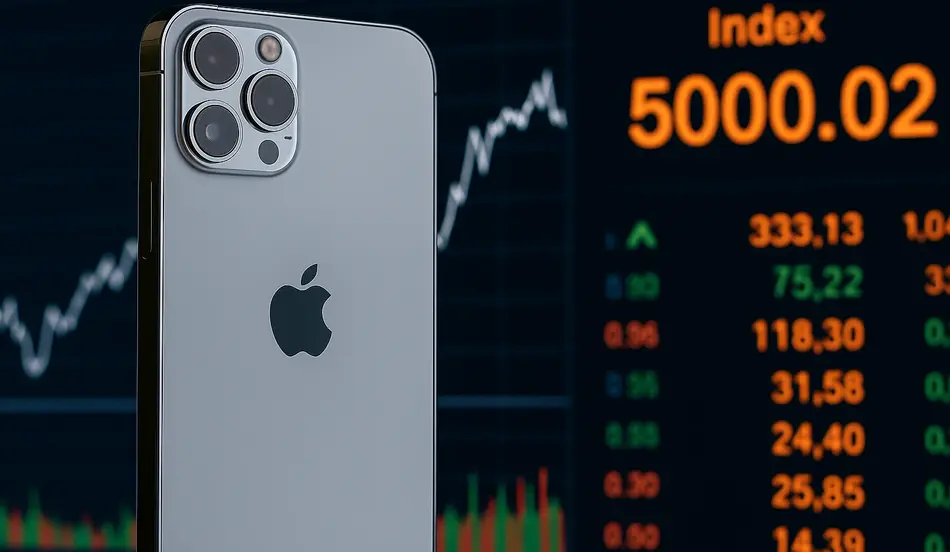Introduction: Understanding the iPhone Upgrade Cycle
The iPhone upgrade cycle has become a central topic for both consumers and investors, especially as Apple’s install base waits for innovation. In this comprehensive analysis, we explore how the iPhone upgrade cycle shapes Apple’s AI strategy, market challenges, and the broader smartphone landscape. The focus keyphrase for this article is iPhone upgrade cycle, which will be discussed in depth throughout.
Apple’s AI Strategy: The Next Frontier in the iPhone Upgrade Cycle
Apple’s approach to artificial intelligence has evolved rapidly, with the company integrating AI features into iOS and its hardware ecosystem. While competitors like Google and Samsung have aggressively marketed AI-powered features, Apple’s strategy has been more measured, focusing on privacy and seamless user experience. The iPhone upgrade cycle is increasingly influenced by the promise of smarter devices, but Apple’s AI advancements have yet to deliver a must-have feature that compels the install base to upgrade en masse.
Apple’s AI Strategy Sparks Interest — Will Innovation Catch Up?
As the iPhone install base waits for AI-powered upgrades and real innovation, now’s the time to stand out. Post your job on WhatJobs and hire ahead of the curve — free for 30 days.
Post a Job Free for 30 Days →Install Base Challenges: Why Are Users Waiting?
Apple’s massive install base is both a strength and a challenge. Many users are holding onto older iPhones longer, waiting for significant innovation before upgrading. This trend is partly due to the high quality and longevity of Apple devices, but also reflects a perception that recent upgrades have been incremental. The iPhone upgrade cycle is thus lengthening, impacting Apple’s revenue and market share.
Pricing Constraints and Market Competition
Apple faces pricing constraints as inflation and global economic uncertainty affect consumer spending. The company must balance premium pricing with the need to entice upgrades. Meanwhile, competition from Samsung and Google is intensifying, with both brands offering compelling alternatives at various price points. The iPhone upgrade cycle is further complicated by aggressive trade-in offers and financing options from rivals, making it harder for Apple to maintain its traditional pricing power.
Tim Cook’s Political Positioning and Its Impact
CEO Tim Cook has positioned Apple as a leader in privacy, sustainability, and social responsibility. This political positioning resonates with many consumers but also exposes the company to scrutiny and regulatory challenges. As the iPhone upgrade cycle slows, Cook’s leadership will be tested by both market forces and political headwinds.
Market Outlook: What’s Next for the iPhone Upgrade Cycle?
Looking ahead, Apple’s ability to accelerate the iPhone upgrade cycle will depend on delivering breakthrough innovations, particularly in AI and hardware design. The company’s rumored investments in generative AI and new form factors could reignite demand, but execution will be critical. Investors and users alike are watching closely to see if Apple can recapture the magic that once made every iPhone launch a must-have event.
FAQs: iPhone Upgrade Cycle
What is the iPhone upgrade cycle?
The iPhone upgrade cycle refers to the average period users wait before upgrading to a new iPhone model. It is a key metric for Apple’s business strategy.
How does Apple’s AI strategy affect the iPhone upgrade cycle?
Apple’s AI strategy aims to introduce innovative features that encourage users to upgrade, but so far, these have not significantly shortened the iPhone upgrade cycle.
Why are iPhone users waiting longer to upgrade?
Users are waiting longer due to the durability of existing devices, incremental upgrades, and economic factors, all of which extend the iPhone upgrade cycle.
How does competition from Samsung and Google impact Apple?
Competition from Samsung and Google puts pressure on Apple to innovate and offer better value, influencing the iPhone upgrade cycle and market share.
What should investors watch in the iPhone upgrade cycle?
Investors should monitor Apple’s innovation pipeline, AI advancements, and market response to new models, as these factors drive the iPhone upgrade cycle.
Investor Perspective on the iPhone Upgrade Cycle
From an investor’s perspective, the iPhone upgrade cycle is a critical indicator of Apple’s future growth. For example, in 2024, several major investment firms adjusted their forecasts for Apple’s stock based on reports that the average upgrade cycle had extended to over four years. This shift prompted analysts to scrutinize Apple’s AI roadmap and competitive positioning more closely. As a result, Apple’s share price experienced increased volatility, reflecting market uncertainty about the company’s ability to drive future upgrades. Investors are now keenly focused on upcoming product launches and AI features that could shorten the iPhone upgrade cycle and reignite growth.




